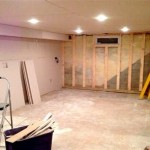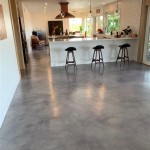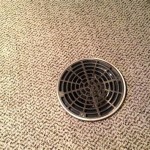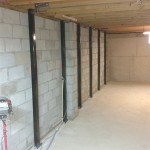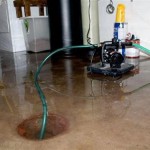How Much Does It Cost To Install A Sump Pump In Basement?
Installing a sump pump in a basement is a proactive measure to prevent water damage and protect a property from flooding. The cost of this installation can vary significantly based on several factors. Understanding these factors is crucial for homeowners planning this home improvement project. This article aims to provide a comprehensive overview of the costs associated with sump pump installation, including the different types of sump pumps, labor expenses, and additional considerations that can influence the overall price.
The initial expense to consider is the sump pump itself. Sump pumps are available in various types, each with different features and price points. The two main types are submersible and pedestal pumps. Submersible pumps are designed to be placed directly in the sump pit, submerged in water. Pedestal pumps, on the other hand, have a motor mounted on a pedestal above the sump pit, with a hose extending down into the water. The type of pump selected will directly impact the overall cost.
Labor costs represent a significant portion of the total expense. Installation involves more than simply placing the pump in the pit. It often requires electrical work, plumbing modifications, and potentially, the excavation of a sump pit if one doesn't already exist. These factors will all influence the final price.
Factors Influencing the Cost of Sump Pump Installation
Several key factors determine the cost of installing a sump pump in a basement. The type of pump, the complexity of the installation, and the geographical location of the property all play a role.
Firstly, the type of sump pump selected significantly impacts the cost. Submersible pumps are generally more expensive than pedestal pumps due to their more robust construction and ability to handle solids in the water. A basic pedestal pump might cost between $75 and $200, while a submersible pump can range from $150 to $400 or more, depending on the horsepower and features. More advanced models, such as those with battery backup systems or alarms, can cost upwards of $500 or even $1,000.
Secondly, the complexity of the installation is a major cost driver. If a sump pit already exists, the installation process is simpler and less expensive. However, if a pit needs to be excavated, the labor costs will increase substantially. Excavating a sump pit can involve breaking through concrete, which requires specialized equipment and adds to the time and effort involved. Additionally, the electrical and plumbing work required can vary depending on the existing infrastructure. If new electrical outlets need to be installed or existing plumbing needs to be modified, the costs will increase accordingly.
Thirdly, geographical location plays a substantial role in the overall cost. Labor rates for plumbers and electricians vary depending on the region. Areas with a higher cost of living typically have higher labor rates. Furthermore, building codes and permit requirements can also vary by location, adding to the overall expense. It's essential to obtain quotes from multiple contractors in your area to get a sense of the prevailing rates.
Beyond these primary factors, other considerations can impact the cost. The type of discharge pipe used, the presence of radon mitigation systems, and the need for additional waterproofing measures can all influence the final price. For example, if the discharge pipe needs to be run a long distance or requires special fittings, the cost of materials and labor will increase.
The power and features of the sump pump also influence the initial purchase price. Sump pumps are rated by horsepower, which indicates their pumping capacity. Higher horsepower pumps are capable of moving more water, but they also cost more. Features such as automatic float switches, alarm systems, and battery backup systems can further increase the price. The selection of the proper pump for the specific need will impact the installation cost.
Breakdown of Costs: Materials and Labor
Understanding the breakdown of costs between materials and labor is essential for budgeting purposes. The materials required for a sump pump installation typically include the pump itself, piping, fittings, check valves, and electrical components. The labor costs cover the time and expertise of the plumber or contractor performing the installation.
The cost of materials can vary depending on the quality and type of components selected. As previously mentioned, the sump pump itself is the most significant material cost. The pricing details of the sump pump will be dependent on the features and the horsepower of the pump. Piping and fittings can add another $50 to $150 to the material costs, depending on the length of the discharge pipe and the type of materials used. Check valves, which prevent water from flowing back into the sump pit, typically cost between $10 and $30. Electrical components, such as extension cords or wiring, can add another $20 to $50. If the sump pit requires excavation, the cost of concrete or gravel will also need to be factored in.
Labor costs typically account for a significant portion of the total expense. Plumbers and contractors typically charge by the hour, and their rates can vary depending on their experience and location. A simple sump pump installation, where a sump pit already exists and minimal plumbing or electrical work is required, might take 2 to 4 hours. However, a more complex installation, involving the excavation of a sump pit or extensive plumbing modifications, can take a full day or even longer. Hourly rates for plumbers and contractors can range from $50 to $150 or more, depending on the location and the complexity of the project. Therefore, labor costs can range from $100 to $800 or more, depending on the scope of the work.
When calculating the total cost, it's crucial to factor in potential additional expenses. These can include permit fees, which may be required by local building codes, and the cost of disposing of any debris generated during the installation process. Permit fees can range from $50 to $200 or more, depending on the location. The cost of debris removal can vary depending on the amount of waste generated and the disposal options available.
Additionally, consider the cost of any necessary repairs or upgrades to the existing plumbing or electrical systems. If the existing plumbing is old or corroded, it may need to be replaced to ensure proper drainage. Similarly, if the electrical system is not up to code, it may need to be upgraded to handle the additional load of the sump pump. These repairs or upgrades can add significantly to the overall cost of the project.
Estimating the Total Cost and Potential Additional Expenses
Based on the factors discussed above, estimating the total cost of sump pump installation requires careful consideration of the specific circumstances of the property and the scope of the work involved. A general estimate can be provided, but it's essential to obtain quotes from multiple contractors to get a more accurate assessment. It is always best to get several quotes before hiring a contractor.
A basic sump pump installation, involving the replacement of an existing pump in a pre-existing sump pit, may cost between $400 and $800. This includes the cost of the new pump, basic plumbing and electrical work, and labor. A more complex installation, involving the excavation of a sump pit and extensive plumbing or electrical modifications, can cost between $1,000 and $3,000 or more. This includes the cost of the pump, excavation work, plumbing and electrical modifications, and labor.
It's crucial to factor in potential additional expenses when budgeting for a sump pump installation. These can include permit fees, debris removal costs, and the cost of any necessary repairs or upgrades to the existing plumbing or electrical systems. Permit fees can add $50 to $200 or more to the total cost. Debris removal can cost between $50 and $200, depending on the amount of waste generated and the disposal options available. Repairs or upgrades to the existing plumbing or electrical systems can add hundreds or even thousands of dollars to the overall cost, depending on the scope of the work.
Furthermore, consider the potential cost of a battery backup system. A battery backup system can provide peace of mind in the event of a power outage, ensuring that the sump pump continues to operate and prevent flooding. Battery backup systems can cost between $150 and $500 or more, depending on the capacity and features of the system. The installation of a backup system is an important consideration for homes that are prone to power outages.
Another potential additional expense is the installation of a sump pump alarm. A sump pump alarm can alert homeowners to potential problems, such as a pump failure or high water levels, allowing them to take action before flooding occurs. Sump pump alarms can cost between $20 and $100 or more, depending on the features and complexity of the system. Some alarms are simple float switches that trigger an audible alarm, while others are more sophisticated systems that can send notifications to a smartphone or other device.
In addition to the initial installation cost, it's essential to consider the ongoing maintenance costs associated with a sump pump. Sump pumps require periodic maintenance to ensure proper operation and prevent failures. This can include cleaning the sump pit, inspecting the pump and components, and testing the backup system. The frequency of maintenance will depend on the specific model and the conditions in which it operates. Regular maintenance can help extend the lifespan of the sump pump and prevent costly repairs or replacements.
The cost of sump pump maintenance can vary depending on the frequency and scope of the work. A simple inspection and cleaning can be performed by the homeowner for minimal cost. However, more extensive maintenance, such as replacing worn parts or repairing electrical connections, may require the services of a professional plumber or electrician. The cost of professional maintenance can range from $50 to $200 or more, depending on the complexity of the work.
By carefully considering all of these factors, homeowners can develop a realistic budget for sump pump installation and avoid unexpected expenses. Obtaining quotes from multiple contractors, factoring in potential additional expenses, and planning for ongoing maintenance costs are all essential steps in the process. Investing in a sump pump is a worthwhile investment for protecting a property from water damage and ensuring the long-term integrity of the foundation.

How Much Does Sump Pump Installation Cost 2024 Guide Forbes Home

How Much Does It Cost To Replace Or Install A Sump Pump Homeserve Usa

How Much Does Sump Pump Installation Cost 2024 Guide

How Much Does A Sump Pump Cost To Install Breaking Down Prices 2024 Bob Vila

How Much Does A Sump Pump Cost To Install Breaking Down Prices 2024 Bob Vila

How Much To Install A Sump Pump Elek Plumbing

What Does It Cost To Install A Sump Pump Rcc Waterproofing News

How Much Does It Cost To Install A Sump Pump

Sump Pump Repair And Installation Me

How Much Does A Sump Pump Cost To Install Breaking Down Prices 2024 Bob Vila
